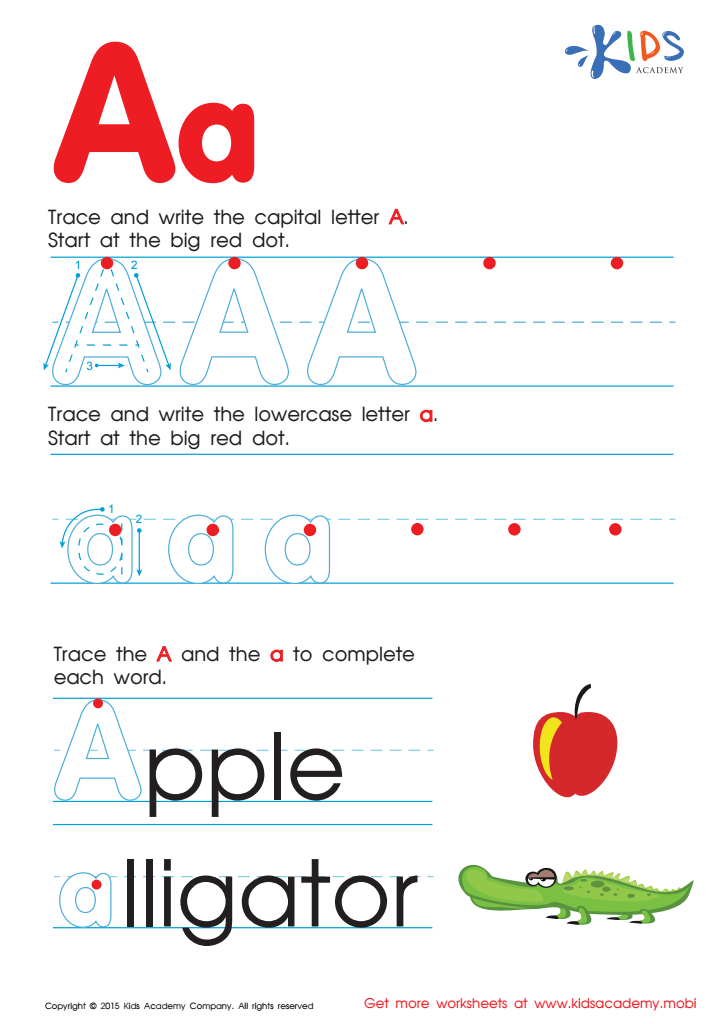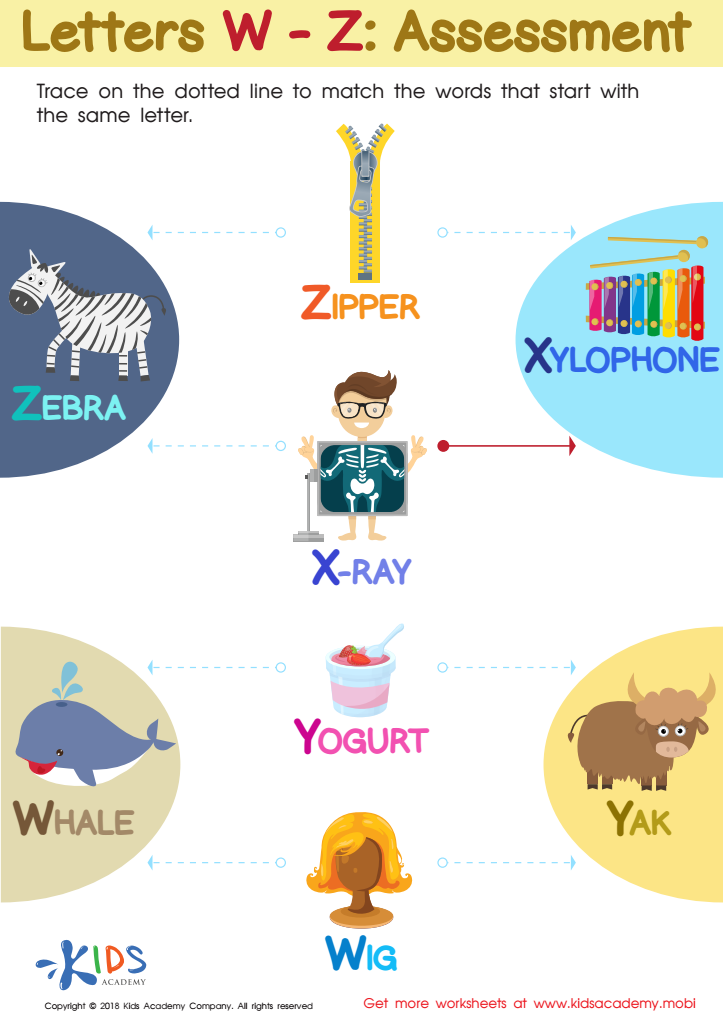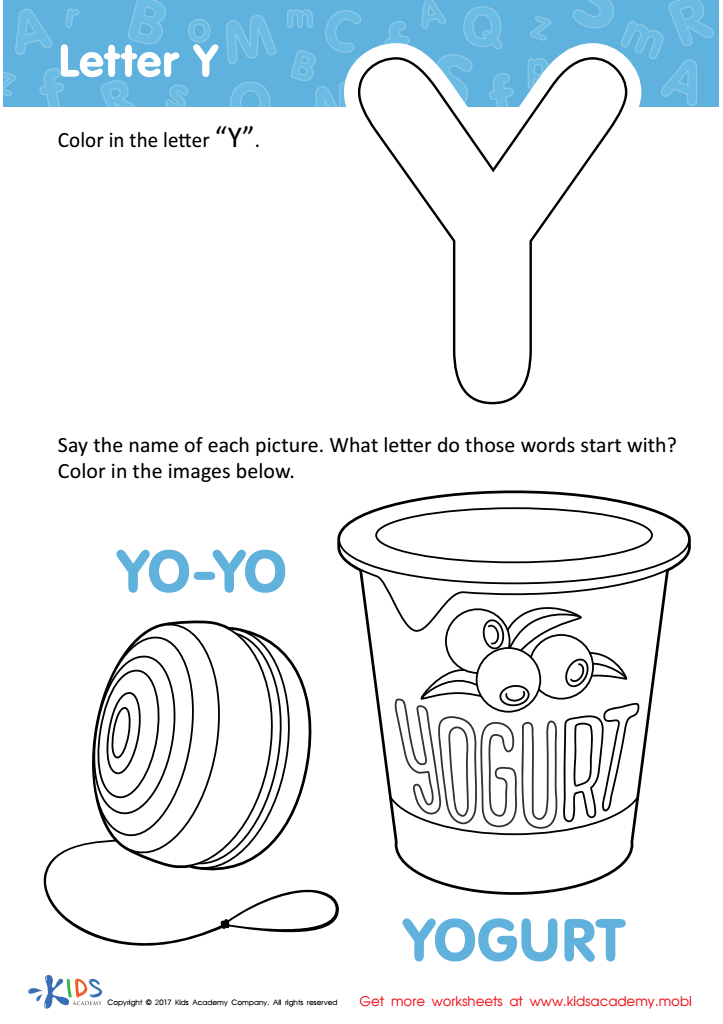Letter formation Letter Recognition Worksheets for Ages 3-6
5 filtered results
-
From - To
Our "Letter Formation and Recognition Worksheets for Ages 3-6" are designed to develop and strengthen young children's writing and reading skills. By focusing on proper letter formation techniques, these engaging and educational worksheets help children recognize and write both uppercase and lowercase letters with confidence. Perfect for preschool and kindergarten learners, our worksheets feature fun activities that reinforce learning through tracing, coloring, and hands-on practice. Created by experienced educators, these resources support early literacy and ensure a smooth transition into reading and writing. Unlock your child's potential and promote a lifelong love of learning with our expertly crafted worksheets.


Letter A Tracing Page


Letter P Tracing Page


Letter G Tracing Page


Letters W–Z Tracing Worksheet


Letter Y Coloring Sheet
Letter formation and letter recognition are foundational skills crucial for early childhood development. For children aged 3-6, mastering these skills sets the stage for future academic success and effective communication.
First and foremost, proficient letter formation helps children develop fine motor skills and hand-eye coordination, essential for all handwriting activities. When kids learn to write letters correctly, they develop muscle memory, making writing more fluent and legible as they progress academically.
Letter recognition, on the other hand, underpins literacy development. Understanding letters and their sounds (phonics) fosters early reading skills, as children can decode words while reading and encode words when writing. This recognition is directly linked to vocabulary building and reading comprehension, pivotal components of lifelong learning.
Additionally, the early development of these skills boosts self-esteem and confidence. Children swiftly recognizing and writing letters find academic tasks more manageable, leading to positive reinforcement from teachers and parents alike.
In the digital age, letter writing might seem less critical, but it remains integral for forming connections between thoughts and written language. Encouraging proper letter formation and recognition ensures children have a firm grasp of fundamental literacy skills, paving the way for both academic achievement and effective communication skills in the future.

 Assign to My Students
Assign to My Students




















